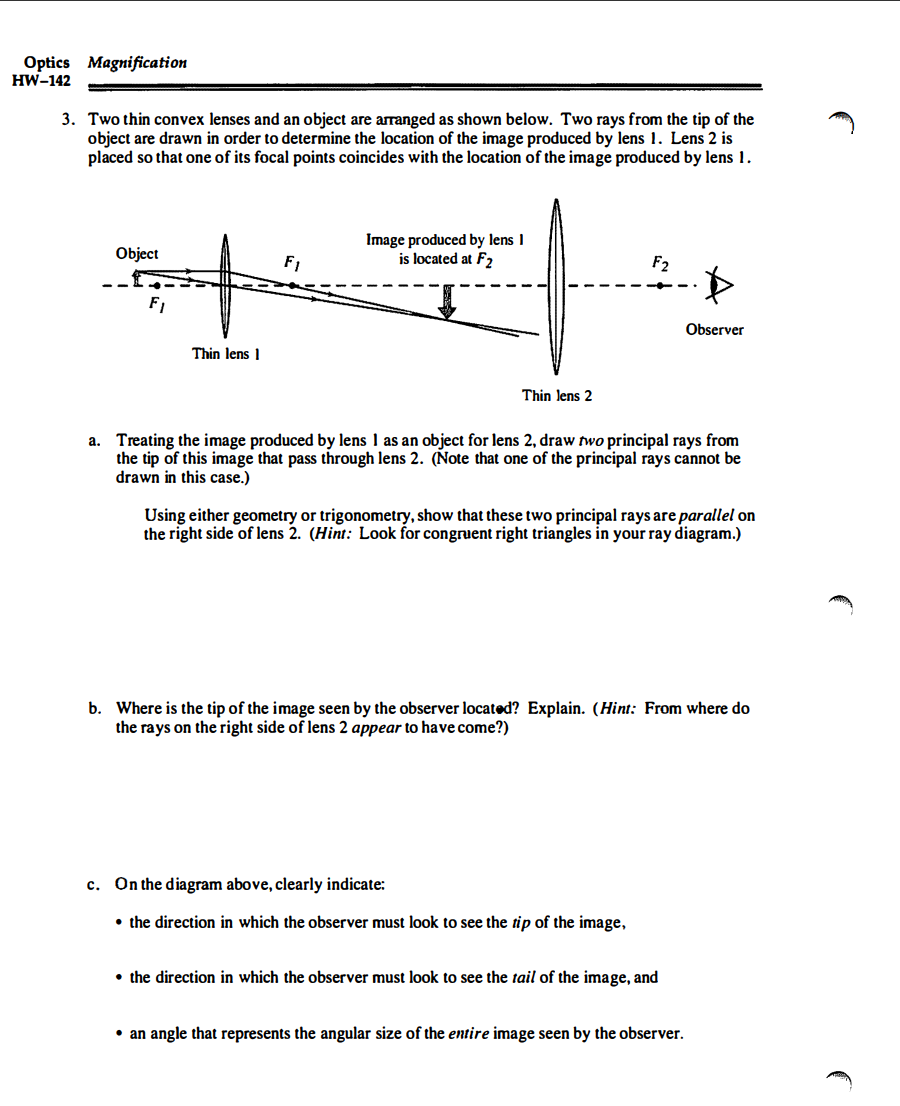Answered step by step
Verified Expert Solution
Question
1 Approved Answer
Determine an expression for the lateral magnification, m = h/h, in terms of the object distance, xo, and the image distance, x. (Hint: Draw



Determine an expression for the lateral magnification, m = h/h, in terms of the object distance, xo, and the image distance, x. (Hint: Draw the principal rays for the tip of the pencil and look for similar triangles. Clearly indicate the similar triangles that you use to determine your answer.) Object Thin lens F Image Optics Magnification HW-142 3. Two thin convex lenses and an object are arranged as shown below. Two rays from the tip of the object are drawn in order to determine the location of the image produced by lens 1. Lens 2 is placed so that one of its focal points coincides with the location of the image produced by lens 1. Object FI Thin lens 1 Fi Image produced by lens 1 is located at F2 F2 Observer Thin lens 2 a. Treating the image produced by lens I as an object for lens 2, draw two principal rays from the tip of this image that pass through lens 2. (Note that one of the principal rays cannot be drawn in this case.) Using either geometry or trigonometry, show that these two principal rays are parallel on the right side of lens 2. (Hint: Look for congruent right triangles in your ray diagram.) b. Where is the tip of the image seen by the observer located? Explain. (Hint: From where do the rays on the right side of lens 2 appear to have come?) c. On the diagram above, clearly indicate: the direction in which the observer must look to see the tip of the image, the direction in which the observer must look to see the tail of the image, and an angle that represents the angular size of the entire image seen by the observer. MAGNIFICATION Name d. On the basis of your results in parts a-c, which would appear larger: the image seen by the observer (with both lenses present) or the object itself (with the lenses removed)? Explain. Optics HW-143 e. The diagram in this problem illustrates a compound microscope. Lens 1, called the objective, is placed near the object of interest. Lens 2, known as the eyepiece, is placed so that one of its focal points coincides with the image produced by the objective. In order to improve the angular magnification of the microscope shown above, would you replace the eyepiece (lens 2) with another lens that has a smaller focal length or a larger focal length? Explain your reasoning.
Step by Step Solution
There are 3 Steps involved in it
Step: 1

Get Instant Access to Expert-Tailored Solutions
See step-by-step solutions with expert insights and AI powered tools for academic success
Step: 2

Step: 3

Ace Your Homework with AI
Get the answers you need in no time with our AI-driven, step-by-step assistance
Get Started


